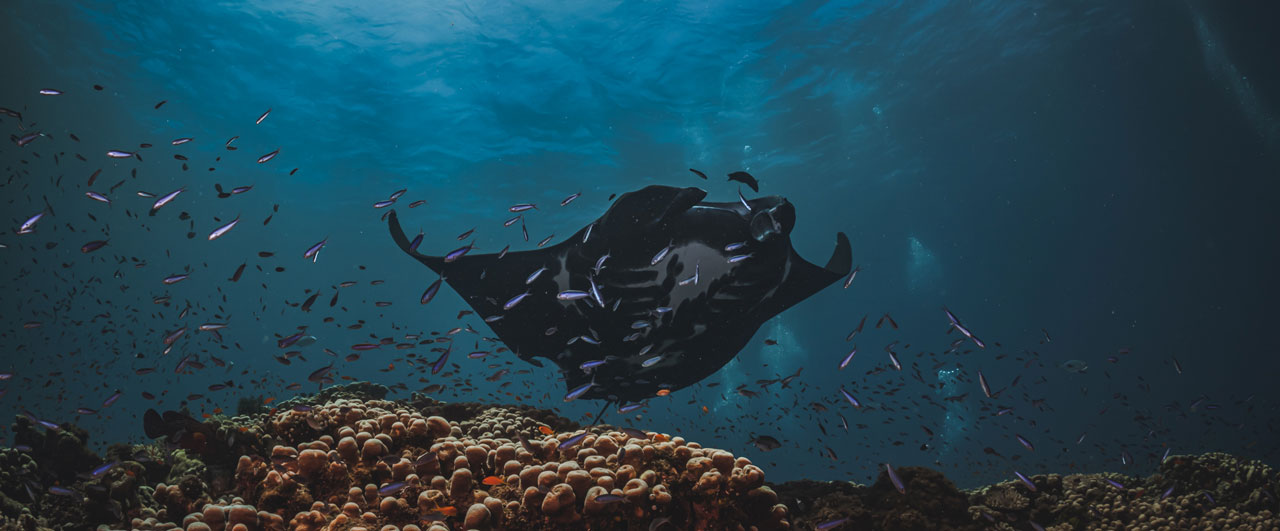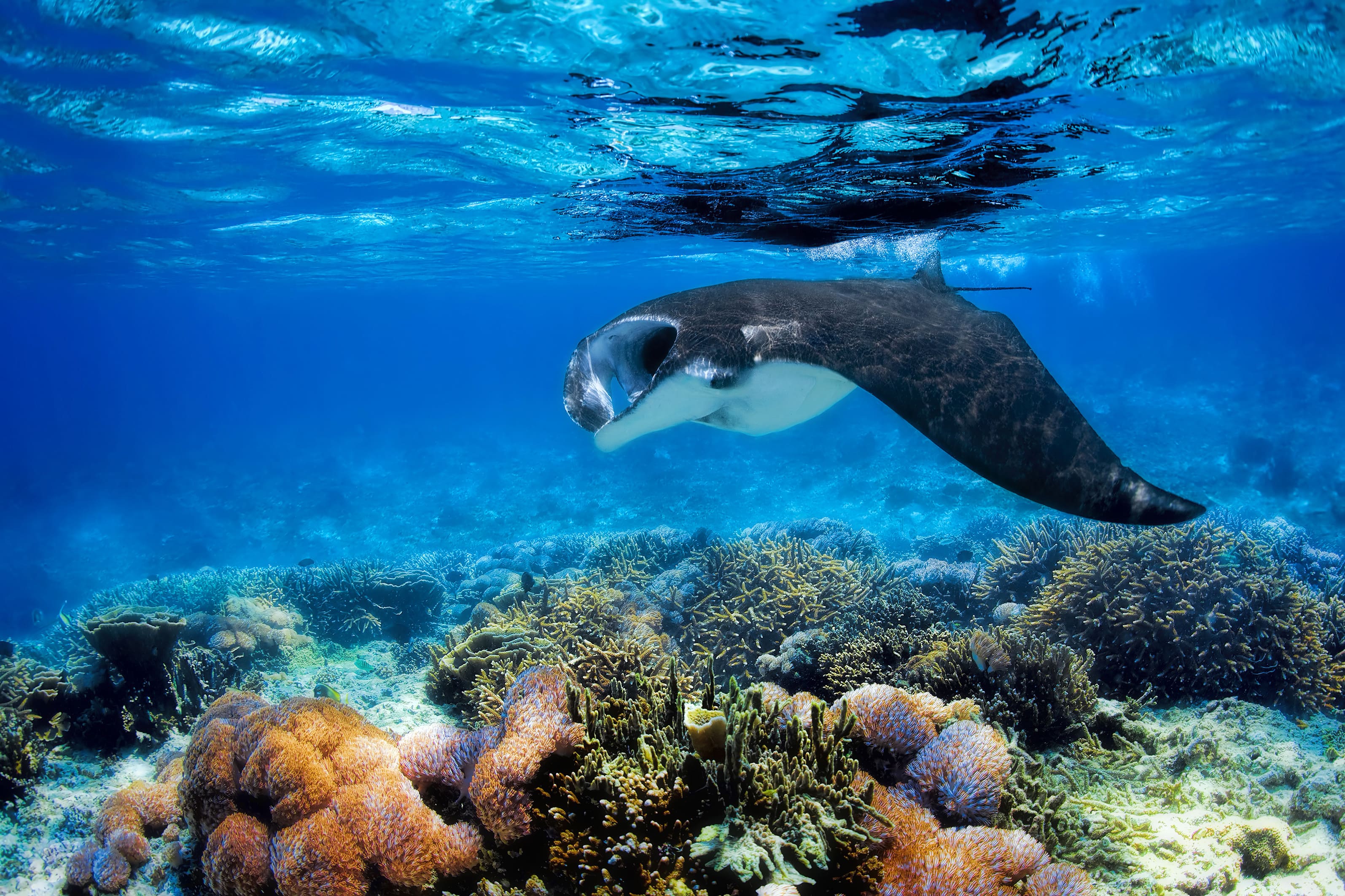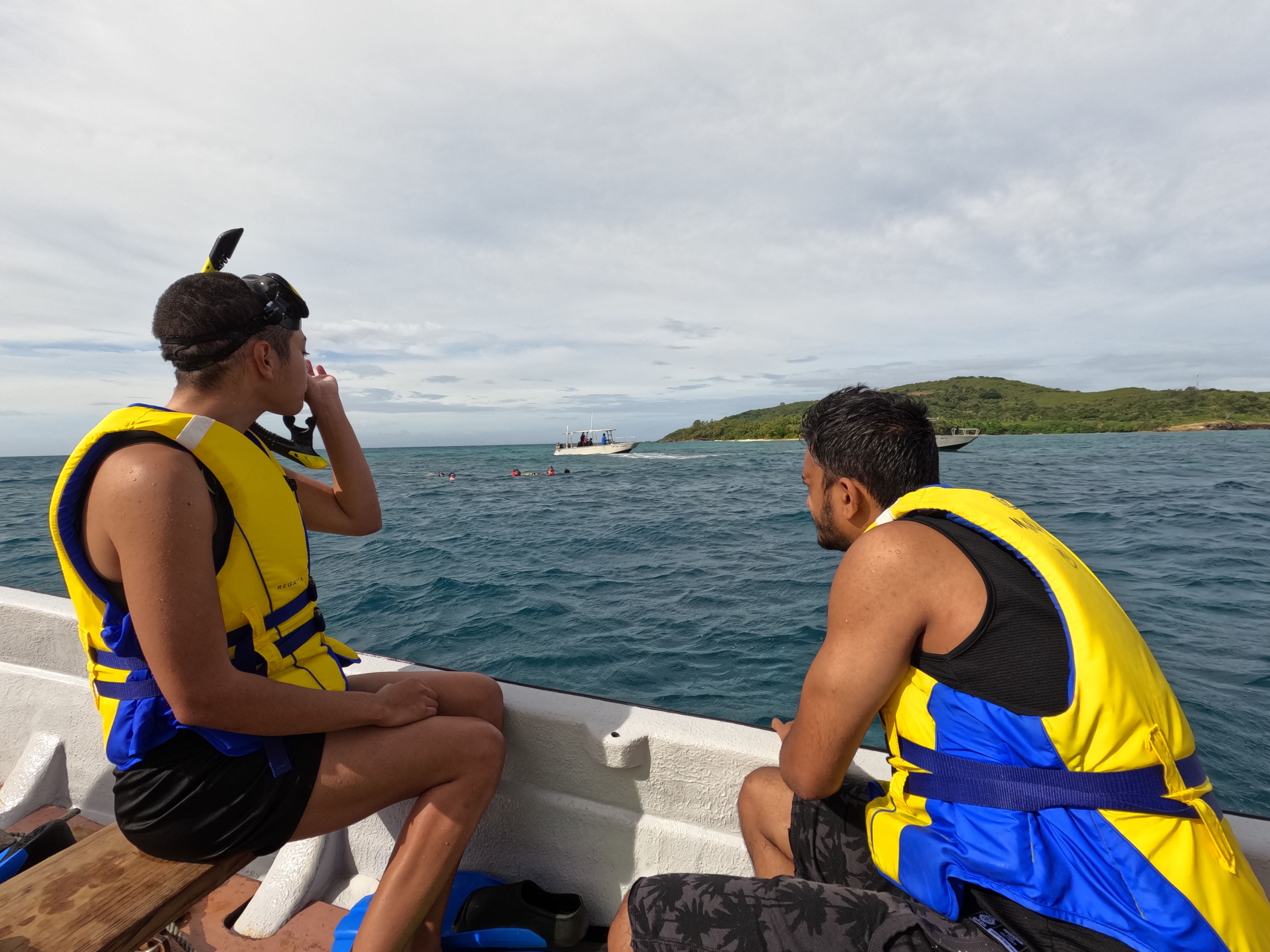Go Manta Ray Snorkelling in Fiji


The Complete Guide to Snorkelling with Manta Rays in Fiji
Here’s everything you need to know about swimming or snorkelling with manta rays in Fiji.
What are Manta Rays?
Mantas are the world’s largest rays and generally consist of two species: giant oceanic manta rays (Manta birostris) and reef manta rays (Manta alfredi). Giant oceanic manta rays migrate vast distances (over 1000km) while smaller reef manta rays have shorter migrations (around 100-250km) because they like to stay in shallower water where there is a good food source.
Can I See Manta Rays in Fiji?
Reef manta rays are more common in Fiji and have two colorations: onyx blank and bold chevron. Most guides however can recognize individual mantas by their unique markings (much like a fingerprint) and even name the ‘regulars’ that frequent an area. But despite their similarity to stingrays and enormous size mantas are gentle, filter-feeding giants without a bite or barb.

Are Manta Rays Protected in Fiji?
Listed on the IUCN Red List as endangered (oceanic) or vulnerable (reef), manta rays are protected in Fijian waters. They aren’t really targeted for food here but are sometimes accidently caught in fishing nets. Mantas are late bloomers and take years to start having ‘pups’ and even then, only have very few. So, any fishing pressure – targeted or not - can impact their population.
The Manta Project Fiji is working with some local resorts to tag and study manta behavior so that they can establish its true population size, understand migration paths and plan how to best protect them.
When is manta ray season in Fiji?
Rare sightings of manta rays happen all year round, but you’re more likely to see them in Fiji between May and October. These encounters usually happen at known reef sites where mantas congregate to feed or groom.
Where Can I Swim with Manta Rays in Fiji?
We’re still discovering how mantas move through our islands but there are a handful of places where you can meet with manta rays during the season. Like any wild animal though, sightings are not always guaranteed. So, plan to stay in the area for a few days and your chances of seeing them go way up.
The following sites are some of best places to swim, snorkel or dive with manta rays in Fiji.
Yasawa Islands
During the season, mantas gather on the high tide to feed on plankton in a narrow channel between Drawaqa island and Naviti island. ‘Manta Channel’ is easily Fiji’s most accessible manta site with numerous resorts, cruises, and day tripping options available.
It’s a fairly shallow site (you can see the seafloor) with a brisk current that will carry you through rather quickly so always opt for a lifejacket to conserve your energy. Your guide will help you spot the mantas, signal where to drop in and coordinate with the boatman to do it all over again.
Kadavu
There are a couple of manta sites on the Great Astrolabe Reef in Kadavu – a remote cluster of islands in southern Fiji. Much like a ‘drive-thru carwash’ these are mostly reef cleaning stations where small fish and shrimp clean parasites from their manta patrons. Deeper sites like the one near Matava Resort on Kadavu’s southern coast are suited to diving while shallower sites like those near Kokomo Island Resort and Oneta Resort are great for snorkelling.
Wakaya Island
The sites near Wakaya island in central Fiji are deeper and more suited to diving so you’ll have more time underwater to observe the mantas feeding and cleaning. Visit these sites when you stay at Wakaya Island Resort and Spa or on the dive liveaboard Nai’a Fiji.

How Much Does it Cost to Swim or Snorkel With Manta Rays in Fiji?
Prices for guided manta snorkeling tours differ across resorts. Generally, it’s cheaper to stay at a resort close to the manta feeding or reef cleaning site to save on boat fuel and travel time.
Resorts usually time manta encounters on the high tide. But those resorts close to the sites have ‘lookouts’ who confirm when the mantas are in the channel. Listen out for lali (drum) beats and brace yourself for a mad dash to the boat; just don’t forget your snorkels in the rush!
That said, if you’re on a multi-day cruise or yacht charter through the Yasawa islands, the manta experience is usually included in your itinerary. And for those who are keen but short on time, there’s always the option to book a daytrip with South Sea Cruises out of Port Denarau on the main island.
Top Tips for Swimming Manta Rays
Join a guided tour to get the most out of your experience and follow these tips
-
Give the mantas space to move (3m or more is ideal). Touching, harassing or splashing about too much could scare them off so keep your movements slow and calm.
-
Follow your guides directions. There’s lots going on, so stick with your guide and be aware of your surroundings (boats snorkelers, divers) to avoid injury.
-
Always opt for a life jacket on a snorkel even if you are a confident swimmer. Some of the locations have currents which can tire you out easily. You’ll have a much better time in the water with the extra floatation.
-
Don’t forget your Go Pro or underwater camera!
-
Bring a towel and a spare T-shirt with you on the trip to dry off and stay warm on the boat ride back to your resort.
-
Know that mantas are wild animals and don’t always stick to a schedule. If you stay in the area for a few days during the season, you’re more likely to meet with them.